No, it is best to use cat-specific shampoo on your cat.
As Head & Shoulders is made for humans it is likely to cause skin problems when used on a cat.
If your cat has dry skin or dandruff, there are cat-friendly shampoos that can help with this issue.
Contents
Can you use head and shoulders on a cat for fleas?
No, while Head and Shoulders may kill the fleas and get rid of flea debris such as spiral flea dirt it can also cause skin conditions and further issues.
For shampoo to work against fleas it needs to be left on your cat for a few minutes, this can cause skin irritation, sores, and discomfort when the shampoo used has not been formulated for use on cats.

As your cat cannot tell you the shampoo is hurting them, it is safer to choose a shampoo or alternative flea product that has been made for cats.
A flea shampoo designed for cats will also be more efficient.
If your cat has fleas there are also topical spot-on treatments and collars that can help kill the fleas and solve the problem.
Flea shampoos are formulated with ingredients that help to get rid of fleas by suffocating or repelling them.
Is head and shoulders toxic to cats?
While there is no published data that suggest Head and Shoulders is toxic to cats, it can cause sickness.
Even after washing the shampoo off, there will still be some on your cat’s fur.
If your cat licks or ingests any of the shampoo it will most likely cause vomiting.
Using human shampoo can also cause skin issues and can cause long-term issues due to your cat’s skin being stripped of its natural oils.
If your cat seems to have dry skin and dandruff then it is important to get a cat shampoo that will help condition their skin.
You should also ensure your cat’s diet contains omega-3 fatty acids as this helps promote skin health.
A vet can help to diagnose skin conditions and recommend treatments.
Can I use human shampoo on my cat once?
No, it’s always best to use cat shampoo.
Human shampoo such as Head & Shoulders, Palmolive and others is likely to be too aggressive for your cat’s skin which can cause a range of issues including dryness, pain, and irritation.
If you need to clean your cat but you don’t have any cat shampoo on hand, just use water.
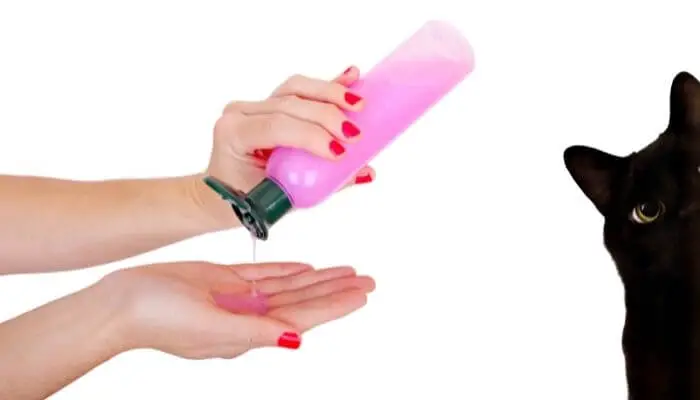
The water will be able to get most of the mess off and is a much safer alternative.
You can also make a DIY cat shampoo by mixing 4 parts water to 1 part apple cider vinegar and 1 part dish soap.
This should only be used as a one-off when you are in a pinch.
Can you wash a cat with dandruff shampoo?
Yes, but only if the dandruff shampoo has been designed specifically for cats.
There are many cat shampoos that are specifically for use on dry skin and dandruff.
Using this shampoo will help to clean and moisturise their skin.
It’s best to avoid harsh ingredients as these can cause further irritation.
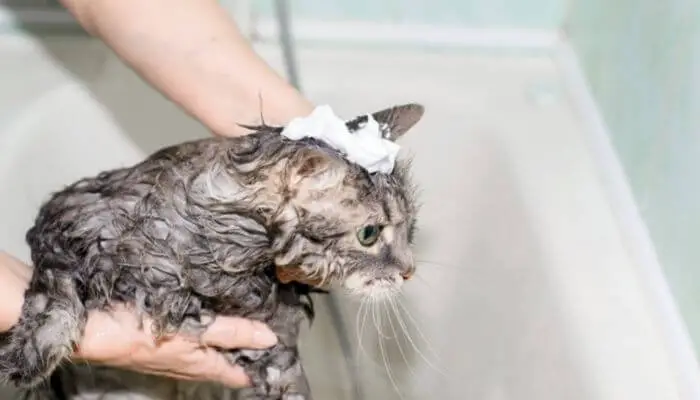
This is why human shampoo is not suitable, the formula will be too harsh for your cat and can cause the skin condition to worsen.
Other ways you can help treat your cat’s dandruff is by using diet supplements, changing their food to one that is rich in protein and omega-3, treating for external parasites and investing in a home humidifier to add moisture into the air.
Which human shampoo is safe for cats?
No human shampoo is going to be 100% safe for cats.
If you don’t have cat shampoo available and your cat needs a bath then either use water or a safe homemade cat-friendly shampoo.
There are many reasons human shampoo is not safe for cats, including:
1. pH Level
Human skin has a pH level of around 5.5, this is more acidic than cat skin which has a pH level of around 7.5.
As human shampoo has been formulated for human skin, it can cause your cat’s skin to become damaged, itchy, and dry.
2. Sweat Glands
Another big difference between humans and cats is that humans sweat from various places while cats only sweat from hairless areas such as their paws and toes.
This means cats cannot replace the natural oils that have been stripped from their skin and this can make them more prone to skin infections as well as dryness and irritation.
3. Harsh Ingredients & Fragrances
The ingredients in human shampoo tend to be harsher and often contain fragrances that can be toxic to cats.
Cats may ingest some of this when they are licking their fur and this can cause them to vomit.
This can result in your cat experiencing toxicity if any of the ingredients of the shampoo are toxic to cats.
4. Unknown Side Effects
Finally, human shampoo has not been tested on cats so we don’t know all of the side effects cats may experience if human shampoo has been used on them.
We know that the difference in skin types is likely to result in dryness and skin issues and there is a higher chance of toxicity but the extent of these issues are not known.
There can also be long-term issues caused by using human shampoo.
As you can see, there is a wide range of reasons not to use human shampoo on your cat. Most of the time your cat will keep themselves clean with their own grooming routine.
If you are considering using human shampoo to help with your cat’s dry skin or fleas, invest in cat shampoo instead.
You can also use water to help get the mess out of your cat’s fur as this is better than using a human shampoo that will potentially result in side effects.
What to do if you have used head and shoulders on your cat?
If you have washed your cat with human shampoo, the first thing to do is to make sure you have rinsed all of the product out of your cat’s fur and off of their skin.
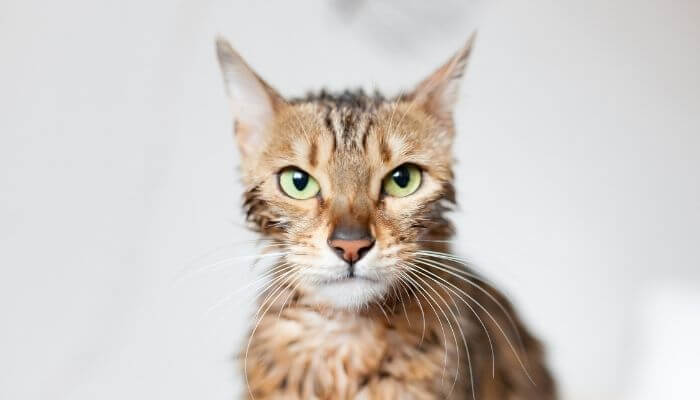
Then, you need to keep a close eye on your cat and watch out for signs of lethargy and vomiting as well as for skin irritation, dry skin, increased scratching and hair loss.
If your cat is displaying severe symptoms then you need to take your cat to the vet immediately.
The safest cat friendly products to wash your cat with
The safest product to use is cat shampoo, this has been made specifically for cats so will be mild, safe, and non-toxic.
Before you use the cat shampoo, read the usage instructions as some shampoos need to be diluted before use.
There are many different cat shampoos available so you should be able to find one that suits your cat’s skin issue as well as your budget.
Vets can also prescribe medicated shampoo if necessary.
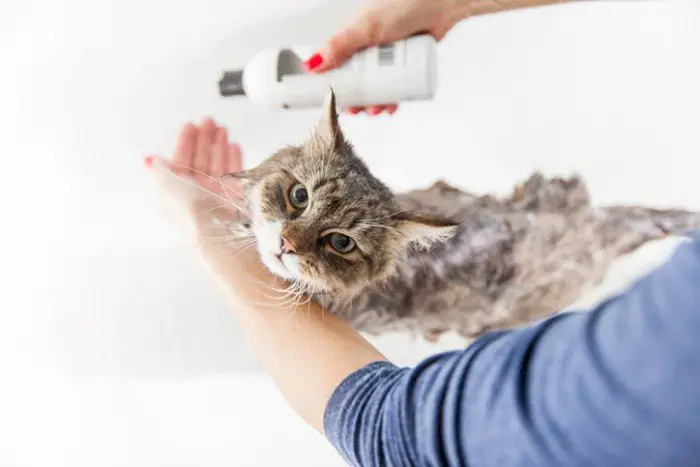
If you are in a tight spot and you need to wash your cat, you can mix water (4 cups) with gentle dish soap (1 cup) and apple cider vinegar (1 cup).
Mix the solution well and use it as a once-off cat shampoo substitute.
If your cat hates the bath then you could try a cat waterless shampoo that you don’t need to wash out.
Instead, the shampoo can be massaged into their coat and then brushed out.
Remember that cats do not need regular baths as they groom themselves and usually keep themselves very clean.
When your cat is grooming themselves as normal, bathing them could cause them more harm than good and it can negatively impact your relationship with your cat (as most of them hate bathing so find the experience stressful).
With that said, every so often a bath with cat shampoo is necessary, for example, if they have fleas, have a skin condition that can be treated with medicated shampoo, they are unable to groom themselves properly, or they have some sticky or dangerous substance on their fur.
At these times, always use a cat-friendly shampoo rather than a dog or human one.


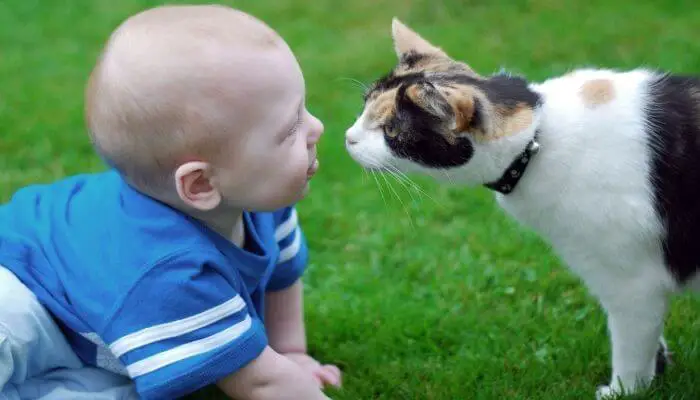
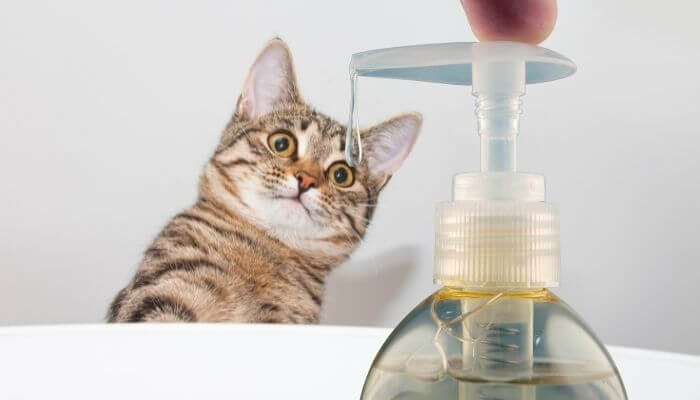

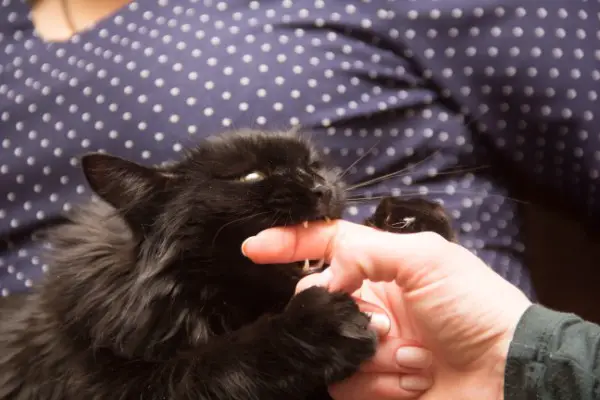

Leave a Comment